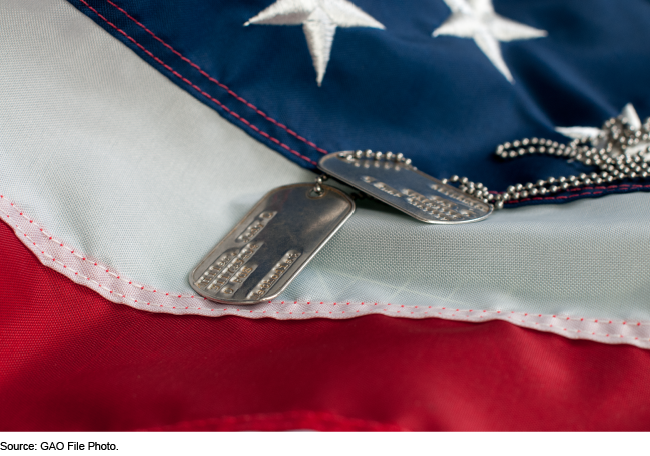Veterans Affairs: Projection, Use, and Oversight of COVID-19 Relief Funding
Fast Facts
The VA received approximately $36.7 billion in supplemental funding for COVID-19 relief during 2020 and 2021.
We reviewed how the VA used these funds, and found that most of this money went to three areas of VA's operations:
- Veterans' health care, including paying for veterans to receive care at non-VA facilities due to the increased demand for emergency and urgent care during the pandemic
- Digital services, to support distance learning and to convert paper files to digital so employees could continue processing disability benefits for veterans
- IT efforts, such as providing laptops and cell phones to support expanded telework and telehealth

Highlights
What GAO Found
The Department of Veterans Affairs (VA) received approximately $36.70 billion in supplemental funding outside of its annual appropriation from three COVID-19 relief laws between 2020 and 2021: the CARES Act; the Families First Coronavirus Response Act (FFCRA); and the American Rescue Plan Act of 2021 (ARPA). As of August 23, 2022, VA had obligated approximately 99 percent of its funds from the CARES Act and FFCRA and 56.9 percent of funds from ARPA.
Department of Veterans Affairs' (VA) COVID-19 Supplemental Funding and Reported Obligations and Expenditures through August 2022

Note: An obligation is a definite commitment that creates a legal liability to pay and an expenditure is the actual spending of money.
To determine the amount of COVID-19 supplemental funds to request from Congress, VA relied on assumptions based on information from public health sources and pre-pandemic data. As the pandemic progressed, VA transferred CARES Act funds within the department to respond to changing circumstances related to the pandemic. Further, it relied on data such as medical facilities' caseloads during COVID-19 peaks to inform its request for ARPA funding.
VA used FFCRA and CARES Act funds to finance key areas such as community care, information technology efforts, and education system modernization. It continued to sustain these priorities with ARPA funds. VA is developing plans to continue to finance key areas once the current funding sources are exhausted.
VA took actions to address challenges related to the projection, use, and oversight of COVID-19 supplemental funds. For example:
- VA requested and received congressional approval for greater flexibility in the permitted use of funds to accommodate changing needs;
- VA established a governance council to review proposed information technology investments; and
- to address confusion among VA staff, VA's Office of Finance developed guidance documents on the use of supplemental funds.
Why GAO Did This Study
As of September 26, 2022, VA reported 766,537 cumulative cases of COVID-19 among veterans and 22,990 deaths. The CARES Act, FFCRA, and ARPA included supplemental funds to VA for COVID-19 relief, most of which were for providing health care.
To provide oversight of VA's spending of this supplemental funding, Congress passed, and the President signed into law, the VA Transparency & Trust Act of 2021. The Act included a provision for GAO to review supplemental VA funding for COVID-19. This report describes 1) information used to determine the amount of requested COVID-19 supplemental funding; 2) how VA used supplemental funds for the pandemic; and 3) actions VA took in response to challenges related to the projection, use, and oversight of COVID-19 supplemental funds.
GAO reviewed VA data on obligations, expenditures, and spend plans for COVID-19 supplemental funding, as well as documentation on supplemental funding processes, and guidance on the use of these funds. GAO interviewed VA officials including officials from six Veterans Integrated Services Networks to gain insights into their roles in the projection, use, and oversight of supplemental funding. These six networks were selected based on geographic diversity and a range of funding levels.
VA reviewed a draft of this report and provided technical comments, which were incorporated as appropriate.
For more information, contact Sharon M. Silas at (202) 512-7114 or Silass@gao.gov.
